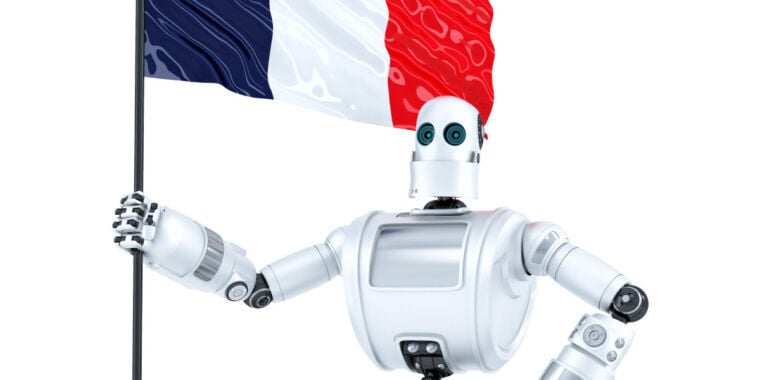Came here with this show in mind. Would recommend.
daredevil
I’m just an internet explorer.
日本語 OK • 中文 OK • tiếng việt OK
@linguistics • @cats • @dogs • @learnjapanese • @japanese • @residentevil • @genshin_impact • @genshinimpact • @classicalmusic • @persona • @finalfantasy
- 1 Post
- 60 Comments

 1·7 months ago
1·7 months agoI haven’t, but I’ll keep this in mind for the future – thanks.

 1·7 months ago
1·7 months agoI believe I was when I tried it before, but it’s possible I may have misconfigured things

 3·7 months ago
3·7 months agoI’ll give it a shot later today, thanks
edit: Tried out
mistral-7b-instruct-v0.1.Q4_K_M.ggufvia the LM Studio app. it runs smoother than I expected – I get about 7-8 tokens/sec. I’ll definitely be playing around with this some more later.

 2·7 months ago
2·7 months agoThat’s good to know. I do have 8GB VRAM, so maybe I’ll look into it eventually.

 3·7 months ago
3·7 months agoI’m looking forward to the day where these tools will be more accessible, too. I’ve tried playing with some of these models in the past, but my setup can’t handle them yet.

 1·7 months ago
1·7 months agoDeep Questions with Cal Newport
Learn Japanese with Masa-Sensei

 2·7 months ago
2·7 months agoHehe yeah, I’d have to agree. Studio Ghibli films are really nice. I should probably give it a rewatch some time soon.

 9·7 months ago
9·7 months agoKiki’s Delivery Service

 5·7 months ago
5·7 months agoTo add further context–I’d like to emphasize that an understanding of written Chinese would help with Kanji, but like you said, to a limited extent. When reading Kanji, there are cases where you’d have to be cognizant of Onyomi and Kunyomi (Basically pronunciations rooted in Chinese vs. Japanese). Not as important if you are strictly “reading”, I suppose. However, this would also not provide insight when reading Hiragana nor Katakana, how particles are used, rules for conjugation (polite vs. casual, past vs. non-past tense, etc.), further reducing mutual intelligibility. In some cases, Chinese characters may be visually identical to Japanese Kanji, yet have different meanings or applications. Traditional Chinese vs. Simplified Chinese is also a whole other topic.
Examples where there is some similarity:
JP: 走る
EN: Run (verb)CN: 走路
EN: Walk (verb)Matching characters, unrelated meaning and application:
JP: 勉強
EN: Study (noun)CN: 勉強
EN: Reluctantly (adverb)Furthermore, Chinese uses Subject-Verb-Object (SVO) word order, whereas Japanese uses Subject-Object-Verb (SOV) word order. Japanese also regularly uses subject omission, so it’s important to consider these things if you’re moving from one language to the other. Missing an understanding of these differences could lead to pretty different interpretations of a sentence.
That being said, having a background in Chinese would be more beneficial when picking up Japanese than the other way around, IMO.

 3·7 months ago
3·7 months agoTo further add onto this, they can be public or private. Public Collections are able to be followed by other users. This would be helpful for increasing discoverability for fellow users and communities/magazines. You can create Private Collections for personalized feeds that you may not want to share, negating the need to create a new account for feeds with a different theme or purpose.

 5·7 months ago
5·7 months agoOn /kbin, there is a feature called Collections – you can group similar communities akin to multireddits. These collections can be public or private, and don’t need to have an overarching theme. Public collections are pretty handy for discoverability too.

 7·7 months ago
7·7 months agoIt sounds like you’ve taken the appropriate precautions. I’m sure others will have better suggestions, but perhaps you can try running a VM for a week or so as if you’ve made the switch and take note of anything you feel you may be lacking.

 2·7 months ago
2·7 months agoPokemon FireRed–I’m playing it in Japanese to work on my reading and speaking

 3·8 months ago
3·8 months agoEndeavourOS. I like having a relatively bloat-free setup. It’s also been nice because it’s been easy to manage so far.

 1·8 months ago
1·8 months agoIf you receive these notifications on mobile, you can use kdeconnect (gsconnect on GNOME) which sends pop up notifications on your desktop from your phone, as a workaround.
This is awesome, OP. I’ve crossposted this to @linguistics to give you a little more visibility. Cheers.


https://github.com/refact0r/sidefox ?